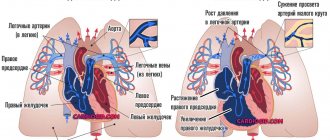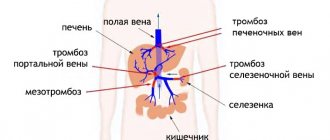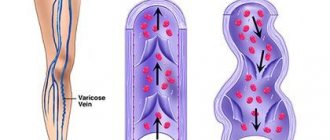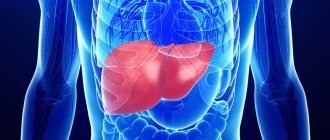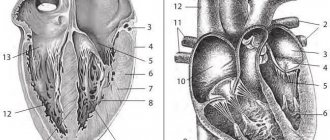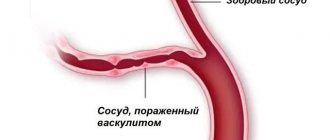Sweating (hyperhidrosis) is a natural physiological process characteristic of all warm-blooded living organisms. It performs a number of vital functions: regulates heat exchange and maintains optimal water-salt balance. But heavy sweating is a symptom of one of the dangerous diseases.
How and why sweat occurs
The content of the article
When overheated, sweat glands begin to release fluid to the surface of the skin, thereby reducing body temperature. Water-salt balance is needed to maintain a constant level of electrolytes and ions in the intracellular fluid. Blood plasma also has a salt composition, but in a slightly different concentration.
The main regulator of sweating is the hypothalamus, a region of the brain that sends signals to various parts of the endocrine system, in particular the sweat glands.
Thus, with an increase in the concentration of salts in the blood plasma and a decrease in the volume of intercellular fluid (workout, visiting a sauna, staying in the sun), the signal is processed by the hypothalamus, which reacts by creating a feeling of thirst.
When body temperature rises, regardless of whether it is external influence (overheating) or internal processes (fever), thermoreceptors reflexively react to this and signal the hypothalamus. It activates the work of more than 2.5 million sweat glands, and they begin to secrete sweat-fat secretion.
What kind of sweating is considered normal: norms, smell
Normally, even at rest, women secrete about 500 ml. sweat, in men - 700-1000 ml. During illness, when body temperature rises, about 3000 ml of sweat is produced per day. Such losses must be compensated, otherwise unpleasant consequences will arise - dehydration.
In addition to reactions to temperature, sweating is psychogenic in nature. Thus, apocrine glands located in the armpits, groin, and genital area are activated at the moment of emotional arousal, when an object of the opposite sex appears, during a quarrel or an increase in the emotional and mental background
The composition of the sweat from these glands is more concentrated, it contains enzymes that have a strong odor. However, it does not cause rejection, but carries genetic information. These are so-called pheromones, which help to choose a person who is suitable from a genetic point of view.
The unpleasant odor of sweat is due to the fact that the sweat of the subcutaneous sweat glands, eccrine glands, can destroy the keratin that covers the top layer of the skin. Microorganisms living on the epidermis begin to feed on softened keratin and multiply, releasing decay products. This is what causes the unpleasant odor.
It is especially active in the area of apocrine glands, so it is important to maintain hygiene standards. Usually, taking a shower or using wet wipes solves the problem of excessive sweating, but in some cases, hyperhidrosis becomes pathological and indicates serious problems in the body.
Deviations from the norm and causes of pathology
In addition to an increase in the amount of sweat even at rest, hyperhidrosis is accompanied by the following symptoms, which can appear individually or in combination:
- pungent odor of sweat (bromidrosis) even with proper hygiene;
- ineffectiveness of hygiene products: deodorants, antiperspirants;
- staining of sweat (chromidrosis) due to intoxication of the body or taking certain medications;
- abrasions and redness in areas of increased sweating.
Hyperhidrosis is divided into primary and secondary, they are caused by different reasons. Primary – characteristic of adolescence and appears during puberty in less than 1% of people.
Secondary hyperhidrosis is a consequence of endocrine, somatic, tumor and other pathologies. It can also accompany normal physiological conditions - menopause, pregnancy.
Each of these types of hyperhidrosis is divided according to its location. Primary is divided into:
- palmar (palmar);
- axillary (axillary);
- foot (plantar);
- hyperhidrosis of the face and scalp (craniofacial);
- perineal (perineal).
Secondary:
- general;
- regional – appears due to damage to peripheral nerves, cerebrovascular disorders;
- focal – Frey's syndrome, eccrine nevi.
Currently, there is no consensus on why primary hyperhidrosis occurs. It is generally accepted that it is based on increased activity of the central division of the sympathetic nervous system.
The main common causes of secondary hyperhidrosis:
- endocrine – diabetes mellitus, increased levels of thyroid hormones;
- lipid metabolism disorder - obesity;
- hormonally active tumors;
- inflammatory and infectious diseases - often tuberculosis, endocarditis;
- psychosomatic pathologies.
In women and men, in addition to the general ones, there are specific causes of heavy sweating. In women, hyperhidrosis is often caused by an increase in the level of sex hormones: estrogen, estradiol, progesterone, prolactin during menstruation, pregnancy, when taking contraceptives, as well as changes in hormonal levels during menopause and the postpartum period.
The cause of increased sweating throughout the body in men is often the level of testosterone. After 40-50 years, the level of this hormone in the body decreases, which disrupts autonomic regulation, as a result of which sweat production increases. Increased sweating can also be caused by nicotine addiction.
Nocturnal hyperhidrosis is classified as a separate category, which is diagnosed in both women and men. There are several reasons for heavy sweating during sleep:
- Sleep apnea syndrome . Mostly typical for men, especially those suffering from constant snoring. 1-2 hours after falling asleep, during deep sleep, heavy sweating begins, and a short-term breath holding suddenly occurs (for a few seconds). After breathing is restored, profuse sweating also occurs.
- Withdrawal syndrome . It is typical for both men and women suffering from alcoholism. With a sudden cessation of alcohol intake, dysfunction of all body systems, malfunctions of various organs, and severe intoxication occur. This condition is characterized by attacks of profuse sweating - very profuse, even to the point of wet underwear and bed linen. Sweat has an unpleasant odor. A similar situation is observed with drug addiction.
- Tuberculosis is often the cause of excessive sweating at night, while with other diseases sweating can increase at any time of the day.
What does increased sweating indicate?
Hyperhidrosis is not always a pathology. Sweating affects obese and overweight people, women in the premenopausal period, and teenagers. There is nothing abnormal about this. Men sweat 2 times more intensely than women, people with African roots have a genetic predisposition to hyperhidrosis, and in summer the intensity of sweating increases regardless of gender and age.
Professional athletes who train 5-6 hours a day, even after taking a shower and completely changing clothes, continue to sweat intensely for some time after physical activity, and this is not a deviation from the norm.
Some people don’t see anything wrong with sweating; it doesn’t irritate them, although those around them suffer from it.
We should talk about pathology when the problem not only interferes with the person who has it, but also affects social connections. Sweat has a rather complex composition, which includes lactic and uric acids, ammonia, and various salts. As a result of exposure to the epidermis, bacteria are activated, which feed on softened keratin particles. This is precisely the reason for the specific vinegar smell of sweat.
In principle, it is enough for a healthy person to regularly change his underwear and take a shower daily so that the unpleasant smell of sweat is not heard. Apocrine glands secrete a substance with an individual odor depending on health, age and fertility.
In unhealthy people, it becomes intense and repulsive to others. Moreover, standard preventive measures (changing underwear, using antiperspirants, showering twice a day) do not bring any results.
Sweating for no apparent reason indicates pathological processes in the body, among which there are life-threatening pathologies. In particular, hyperhidrosis is characteristic of impaired hemostasis - the optimal level of hormones. This happens when there is a malfunction of the hypothalamus, a small area of the brain that controls the endocrine system.
The most famous example of disturbances in the functioning of the hypothalamus is menopause - the attenuation of a woman’s reproductive functions. During this period, the hypothalamus sends incorrect signals, the endocrine systems experience disruption and react with involuntary activation of the sweat glands - the so-called hot flashes.
In addition to menopause, hyperhidrosis occurs in case of other disorders.
Underarm sweating in men
The functioning of the male body is regulated by the hormone testosterone. It performs an anabolic function and accelerates metabolism. Sensitivity to adrenaline is also higher in men. Therefore, small bursts of this hormone speed up the heart rate, increase reaction speed and lead to sweaty armpits.
A man may sweat more than usual if he prefers hot and spicy foods. Sweating of the armpits and the entire body greatly increases when drinking alcoholic beverages. In this case, hyperhidrosis is associated with metabolic processes, as the body removes toxic substances after recycling ethanol. Nicotine has a direct stimulating effect. It increases the synthesis of acetylcholine, which enhances the work of the sweat glands. Therefore, sweating is a natural phenomenon in men who smoke.
Sweating occurs when there is severe nervous tension. Men's jobs are more likely than women's to involve stress or hazardous activities.
Men are susceptible to developing obesity, metabolic disorders and hypertension. Those at risk are those who lead a sedentary lifestyle and have a large waist circumference at the age of 45-50. These disorders affect the tone of the sympathetic nervous system and sweating.
Increased sweating in thyroid diseases
Sweating is characteristic of hyperthyroidism, characterized by an increase in the production of thyroid hormones and the development of intoxication.
In addition to increased, causeless sweating, symptoms of hyperthyroidism include:
- sudden weight loss
- drowsiness
- swelling in the neck area
- tachycardia
- irritability and nervousness
- diabetes. Under the influence of sugar in the blood, blood vessels and nerve connections are destroyed, but not throughout the body, but only in certain areas. The scalp, arms, neck and chest sweat especially heavily in diabetes.
Sweating is also characteristic of hypoglycemia - a lack of glucose in the blood. This is caused by an increase in adrenaline levels, which is activated when there is a lack of sugar.
What is hyperhidrosis
A person has 2 types of sweat glands, which differ in their functions and regulatory mechanisms:
- Apocrine glands - most of them are located in the armpits and around the external genitalia, regulated by the sympathetic nervous system, adrenergic fibers, where the main substance is adrenaline. They begin to function in adolescence, produce a secretion with pheromones - an individual smell; under stress, the function increases, but they do not participate in thermoregulation.
- Eccrine glands - the largest number - are located in the armpits, on the feet and palms, and secrete the liquid part of sweat. The main regulator of the function is acetylcholine. The glands are involved in thermoregulation and sweating during stress.
The work of the vegetative unequal system, which controls the sweat glands, is not controlled by consciousness. Therefore, it is impossible to cause increased sweating on your own; it increases in response to an increase in body temperature during illness, in hot weather or after physical activity. Sweating increases with excitement, emotional stress, which leads to the release of adrenaline.
But the condition of hyperhidrosis is different from normal sweat production. The glands work actively when a person is calm and does not overheat. This is often associated with various pathologies. There is diffuse hyperhidrosis, in which sweating increases throughout the body. The disease is often associated with pathology of the nervous system. Local, or focal hyperhidrosis, affects only one area of the body. This form is more common than others.
Sweating may be seasonal and occur only in the hot season, but for most people with pathology it does not depend on the season.
Pheochromocytoma - sweating due to adrenal tumors
Pheochromocytoma is a tumor of the adrenal gland that stimulates the production of catecholamines - adrenaline and norepinephrine. The disease is characterized by crises, during which panic attacks, tachycardia, nausea, gag reflex, and increased sweating are observed.
The attack is impossible not to notice, because it is accompanied by impaired cerebral circulation, trembling in the body and pulmonary edema. It lasts 2-3 minutes, but is extremely stressful for a person.
In the absence of an adrenal tumor, an increase in catecholamines is caused by heart disease, alcohol withdrawal, and refusal to take certain medications.
Ovarian dysfunction
The pathology occurs in every 10th woman of reproductive age. This may be an ovarian cyst, but polycystic disease often occurs - a complex disease in which ovulation does not occur and the follicle begins to grow. Over time, the ovary becomes like a bunch of grapes due to the many cysts that form.
Hormonal imbalance and lack of female sex hormones lead to increased production of testosterone, the male sex hormone. It increases metabolism, causing increased sweating.
It is also promoted by autonomic disorders, accompanied by irritability, aggressiveness, and sleep disorders. Symptoms of ovarian dysfunction, in addition to sweating, are menstrual irregularities, weight changes, deterioration in health, increased hair growth, etc.
When to see a doctor
If a person begins to sweat during exercise, hot weather, or extreme excitement, there is no reason to worry. Health problems are indicated by sweating, which occurs against a background of complete calm or is accompanied by additional symptoms.
A slightly elevated body temperature, which is accompanied by night or evening sweats, may be a sign of a chronic infection. Sometimes this is how pulmonary tuberculosis, immune disorders, and the initial stages of cancer manifest themselves.
A dangerous symptom is the appearance of weakness, dizziness, loss of consciousness against the background of increased sweating. This may be a sign of low glucose levels - hypoglycemia. The condition is life-threatening and therefore requires emergency medical attention. Hyperhidrosis is cured only after glucose levels are normalized.
Older women who experience menstrual irregularities and the first symptoms of approaching menopause require special treatment. Without special means, the condition may gradually worsen, and menopause will be difficult.
Increased sweating is one of the signs of thyrotoxicosis. This disease is accompanied by an increase in thyroid function and the release of increased doses of hormones into the blood. At the same time, the heartbeat increases, heart rhythm disturbances appear, and the person quickly loses body weight, despite maintaining the nature of the diet.
Sweating and central nervous system diseases
The autonomic nervous system is controlled by centers in the medulla oblongata and spinal cord, and the center is located in the hypothalamus. Ganglia, sympathetic nerve ganglia, are located near the spine, and nerve impulses emanating from them travel along nerve fibers to various parts of the body. If there is a disturbance in the functioning of the central nervous system, increased sweating occurs, regardless of the cause of the malfunction.
But this is only a secondary sign, indicating more significant symptoms:
- with Parkinson's disease,
a person's hands and head shake, muscles have increased tone, and their gait changes; - a stroke
is characterized by speech impairment, changes in facial expressions, and severe headache; - with epilepsy,
a person experiences convulsive seizures, during which hyperhidrosis occurs due to severe overexertion; - with a concussion,
loss of consciousness, nausea, and perspiration may appear on the forehead; - injury to the hypothalamus
manifests itself not only by increased sweating, but also by pressure surges, vascular problems, and sleep disturbances; - hormonal changes.
Teenagers tend to sweat a lot. This is due to a sharp hormonal surge, as well as intensive development of the whole organism and an increase in the functioning of most glands. There is nothing pathological about this, but sweating can cause discomfort for a teenager.
Causes of excessive sweating
Patients most often turn to dermatologists with the primary form of pathology, for which it is impossible to establish the cause. The first symptoms of hyperhidrosis appear during puberty. In girls and boys, this is associated with increased activity of the hormones testosterone and cortisol and immaturity of the nervous system. Daily sweat production becomes strong, activity increases in all types of sweat glands. This is why body odor increases in teenagers.
It is believed that primary hyperhidrosis in 30-50% of patients is associated with hereditary factors. But the first symptoms may appear at the age of 20-30 years. They are provoked by chronic stress, hormonal changes and other reasons. The secondary form of excessive sweating of the armpits is associated with the following conditions:
- excitability and high activity of the autonomic nervous system;
- endocrine pathologies, most often the state of hyperthyroidism, insulin resistance in diabetes mellitus;
- diseases of the cardiovascular system, accompanied by cardiac arrhythmias and rapid heartbeat;
- some types of malignant and benign tumors;
- metabolic disorders and excess body weight;
- overdose or side effects of drugs affecting the autonomic nervous system.
It is not always possible to determine the cause of excessive sweating. But it helps to effectively combat sweating.
Sweating during menopause and pregnancy
In women before menopause, the levels of progesterone and estrogen decrease and the amount of FSH increases. This is a rather long process; menopause does not occur in one day. Several years before the onset of hormonal changes, a woman feels changes at the physiological level: her body odor changes, she sweats more often, quickly gains weight and has difficulty losing it.
Gradually, the level of female sex hormones falls, and male sex hormones (androgens) are produced more than during the fertile period.
Sweating is not the biggest problem; it only indicates irreversible changes in the body. If a woman notices an unusual increase in sweating, she should contact an endocrinologist. The doctor will conduct all the necessary tests and prescribe hormone replacement therapy.
Also, increased sweating often occurs in pregnant women, especially in the 1st trimester. The reason is a sharp restructuring in the body caused by implantation of the embryo to the wall of the uterus. The hypothalamus actively stimulates the production of progesterone, while other hormones are produced in smaller volumes.
A characteristic feature is sweating of the feet, regardless of the intensity of physical activity or its absence. At the same time, in other parts of the body, dehydration and dry skin occurs, even to the point of peeling. This is not a pathology, and by the 2nd trimester, local hyperhidrosis appears much less pronounced.
Types of hyperhidrosis
Hyperhidrosis can be local (localized) or generalized (generalized). When localized, increased sweating manifests itself in certain areas of the body, most often the armpits, palms, knees and elbows, and soles. Sweating may increase in one of these areas or in all of them together. This type of hyperhidrosis is usually caused by increased excitability of the nervous system, in some cases by heredity.
General hyperhidrosis is characterized by excessive sweating over almost the entire surface of the body. It can be physiological, associated with changes in hormonal levels - in adolescence, pregnancy, menopause, and also be a symptom of infectious diseases, functional disorders or diseases of the endocrine and nervous system.
Cardiovascular disease and sweat
They are also characterized by hyperhidrosis caused by activation of the central nervous system. Other symptoms, depending on the disease, include the following:
- for hypertension: increased blood pressure, increased heart rate, tinnitus, headaches, numbness of the hands;
- with coronary heart disease: pain behind the sternum (angina pectoris), inability to take a full breath, nausea and very profuse sweating;
- during myocardial infarction, perspiration covers the entire body, a feeling of fear arises, blood pressure drops, and the person feels very severe pain in the heart area;
- hyperhidrosis with thrombophlebitis occurs in advanced forms of blockage of the vein lumen;
- tachycardia occurs as a reaction to stress or fear, while a person’s adrenaline level increases, the body becomes covered in perspiration, and it becomes difficult to breathe. With tachycardia, there is heat in the head, but the hands remain cold;
- with vegetative-vascular dystonia, sweating is a reaction to stress, even the slightest one.
But with this pathology, the body mobilizes regardless of the reality of the situation. Often a person suffering from VSD experiences bouts of sweating and panic attacks completely unexpectedly: in the subway, in a crowd or in a quiet environment. In this case, hyperhidrosis is a side reaction to imaginary or real stress.
Sweating due to infection
The vital activity of viruses and bacteria is accompanied by the production of pyrogens that affect the thermal sensitivity of neurons. During the period of exacerbation of an infectious disease, body temperature always rises significantly, which is why hyperhidrosis occurs. The virus is accompanied by muscle pain and body aches, the bacterial infection is accompanied by a skin rash and general toxicity.
Rheumatism is also infectious in nature. The patient's body temperature is constantly elevated, which causes severe sweating. Damage to joints and connective tissue prevents normal movement, but people sweat as if after intense training.
Syphilis is a sexually transmitted disease that affects the mucous membranes. It is characterized by damage to the nerve roots located along the spine, which is expressed by a local increase in sweating.
Malignant and benign tumors
The center of thermoregulation is the hypothalamus, and tumors of any nature in this area cause hyperhidrosis. Sweating especially increases at night, regardless of the temperature in the room.
If this happens without explanation, then the following diseases can be assumed:
- histiocytic lymphoma (malignant lesion of lymphoid tissues);
- lymphocytic lymphoma (oncological damage to the lymph nodes);
- mixed lymphoma (complex cancer of the lymph nodes);
- Burkitt's lymphoma (malignant tumor of the jaw).
Oncological neoplasms are accompanied not only by hyperhidrosis, but also by sudden weight loss, sleep disturbances, general weakness and fatigue.
What research is being done to identify the true causes of hyperhidrosis?
Excessive sweating is a subjective concept. Not everyone is alarmed by hyperhidrosis, so we need to talk about pathology if increased sweating is not typical for a person, causes him severe discomfort and causes anxiety.
The initial examination is carried out by an endocrinologist or therapist, because in most cases the cause of excessive sweating is a disruption in the functioning of the endocrine system. The specialist gives a referral for standard tests showing the general condition of the patient’s body.
These include:
- general blood analysis;
- general urine analysis;
- blood chemistry;
- analysis of thyroid hormones (T3, T4, TSH);
- ECG.
Depending on the test results, the patient undergoes additional examinations.
Description of tests and ultrasounds prescribed for excessive sweating
| Preliminary diagnosis | Research | What is the essence of the study? |
| Suspicion of cancer | Analysis for tumor markers | Analysis for tumor markers Tumor markers are specific proteins, the concentration of which increases in the body only during oncological processes. In healthy people, tumor markers are contained in minimal quantities. The main tumor markers are: PSA is a protein that concentrates in a man’s blood during the development of prostate cancer. An increase in protein also occurs with adenoma (benign tumor) of the prostate gland. HCG is present in the body of both women and men. It increases significantly during pregnancy, so it is additionally taken along with a blood test for alpha-fetoprotein (AFP). When the concentration of both proteins increases, a preliminary diagnosis of testicular cancer is made, and in women with ovarian cancer, the AFP level increases significantly. Also, an increase in hCG is observed in cancer of the stomach, uterus, intestines, liver, as well as uterine fibroids. AFP - increases in oncological processes, especially in the liver, as well as in cirrhosis, hepatitis and renal failure. In a pregnant woman, it indicates fetal pathology. Ca-125 is a tumor marker that helps identify cancer of the uterus, breast, stomach, liver, pancreas, etc. It also increases with endometriosis, ovarian cysts, and peritonitis. |
| Suspicion of a pituitary tumor | MRI and angiography Analysis for prolactin X-ray with an eye to the sella turcica Analysis of cerebrospinal fluid (CSF) | For pituitary tumors, a combined MRI and angiography technique is used - studying cerebral circulation. The technique allows you to detect tumors as small as 5 mm. Prolactin is a pituitary hormone that is responsible for milk production in women, but is also present in men. It increases with uterine fibroids, pregnancy, ovarian tumors, and pituitary tumors. Breast discharge in men is associated with an increase in prolactin, which reduces the concentration of male sex hormones and increases the levels of estrogen and progesterone. A pituitary adenoma is indicated by a prolactin concentration in the blood of more than 250 ng/l. The sella turcica is a bone formation in the bed of which the pituitary gland is located. When the walls of the sella turcica are deformed, one can judge the growth of a pituitary tumor. The only drawback is that bone deformation occurs only when the tumor is large. When identifying pituitary tumors, myelin basic protein (MBP) is of great importance. In a healthy person, its value does not exceed 4 mg/l. Also, with neoplasms, epithelial cells are detected in the cerebrospinal fluid, which should not normally be present. The analysis does not yet confirm pituitary adenoma, but is an indication for a more in-depth study. |
| Suspicion of diabetes mellitus | Blood and cerebrospinal fluid test for glucose | A feature of hyperhidrosis in diabetes mellitus is excessive sweating in the armpits, palms, neck, but dry skin of the legs and feet. A blood test will quickly indicate an increase in blood sugar. with an increased glucose content in the cerebrospinal fluid, we can talk about viral lesions of the brain (meningitis). |
| Menopausal syndrome | Sex hormone analysis | “Hot flashes” shortly before the onset of menopause are associated with a decrease in the level of female sex hormones and an increase in androgens. Determining the ratio of estrogen, progesterone, LH and FSH shows a complete picture of hormonal levels. |
| Suspicion of tuberculosis | PCR diagnostics | Polymerase chain reaction helps identify Koch's bacillus within 4 hours. Unlike Mantoux, PCR detects even one bacilli of the pathogen at the earliest stage of the disease. The analysis will also help to select an effective drug and identify resistance to certain drugs. |
| Suspicion of infection | Linked immunosorbent assay | ELISA allows you to see the connection between the body’s immune cell and the cell of the infectious agent. Depending on the type of immunoglobulin (IgE, IgD, IgG, IgM, IgA), the type of pathogen is identified. The analysis identifies more than 600 infectious agents and viruses. |
| Suspicion of heart disease | Laboratory blood test | ESR increases with endocarditis, rheumatic heart disease. In chronic heart failure, the level of protein, as well as potassium and sodium in the blood serum increases. High cholesterol indicates atherosclerotic vascular disease. An increase in white blood cells indicates inflammation. A large number of platelets is observed with venous thrombosis. Enzymes ALT and AST increase during myocardial infarction. An increase in electrolytes occurs when the heart rhythm is abnormal. C-reactive protein is concentrated during myocardial infarction. |
| Suspicion of pheochromocytoma | Ultrasound of the abdominal organs | Pheochromocytoma is a tumor of the adrenal glands that leads to hormonal imbalance. The tumor is visualized on ultrasound as an oval or round formation of increased echogenicity. |
| Suspicion of acromegaly | Analysis for somatotropin | Somatotropic hormone (GH) affects not only growth, but also overall metabolism. A high concentration of the hormone indicates a tumor of the pituitary gland, stomach or lungs, anorexia nervosa, cirrhosis of the liver, and renal failure. Sometimes an illiterate diet leads to an increase in growth hormone, leading to depletion of the body. Low levels of growth hormone indicate pituitary insufficiency caused by infectious lesions of the brain, autoimmune pathologies, vascular disorders and postpartum blood loss. |
Sweaty armpits in women
In the female body, the release of large amounts of sweat depends on hormonal levels. When it changes, the interaction of various parts of the autonomic nervous system changes. This process is most pronounced during menopause.
With a decrease in ovarian function in women, their stimulation by pituitary hormones - follicle-stimulating and luteinizing hormones - increases. But due to physiological characteristics, the release of thyroid-stimulating hormone, which increases blood flow in the thyroid gland, simultaneously increases. Most often this process starts in the evening or at night. It manifests itself in the form of hot flashes - the appearance of a feeling of heat in the upper body and head. The woman begins to sweat heavily. The duration of such an attack is several minutes.
You are more likely to experience heavy sweating if you are overweight. Thermoregulation disorders appear with arterial hypertension. These diseases also often progress after age 50. Hyperhidrosis in this case is secondary. It is not life-threatening, but causes discomfort.
conclusions
Excessive sweating, not associated with increased physical activity, is a common sign of serious pathologies in the body. if this condition persists for a long time or often recurs, you need to urgently consult a doctor - a gynecologist, urologist, andrologist or endocrinologist, get tested and undergo an expert ultrasound.
If you find an error, please select a piece of text and press Ctrl+Enter
Preventive measures
To prevent hyperhidrosis, it is first necessary to exclude the development of somatic diseases and promptly treat chronic pathologies. To do this, you need to regularly visit a doctor for medical examination or prescribe treatment.
If excessive sweating is not a consequence of other diseases, you should adhere to the following measures:
- exclude spicy, hot dishes, spices, alcohol from the menu;
- stop smoking;
- take a contrast shower, warm baths with herbal decoctions (chamomile, oak bark);
- do not take medications without a doctor’s prescription;
- in clothing, give preference to natural fabrics (cotton, linen);
- shoes should be made of genuine leather or breathable materials with special moisture-absorbing insoles.
Article sources:
- Hyperhidrosis: method of correction. Batyrshina S.V., Khaertdinova L.A. Practical medicine No. 8, 2014. p. 16-23
- Hyperhidrosis and its impact on those living with it. Mary Lenefsky, 1Department of Dermatology, Emory University School of Medicine, Atlanta, GA, 2021.
- Pathophysiology and Treatment of Hyperhidrosis. Tomoko Fujimoto. 1Department of Dermatology, Graduate School of Medical and Dental Sciences, Tokyo Medical and Dental University, Tokyo, Japan. 2016
- Axillary hyperhidrosis: a focused review. Jason E Sammons, Amor Khachemoune. Department of Clinical Medicine, Avalon University School of Medicine, Willemstad, CW, USA. 2b SUNY Downstate and VA Medical Center, Brooklyn, NY, USA. 2017


